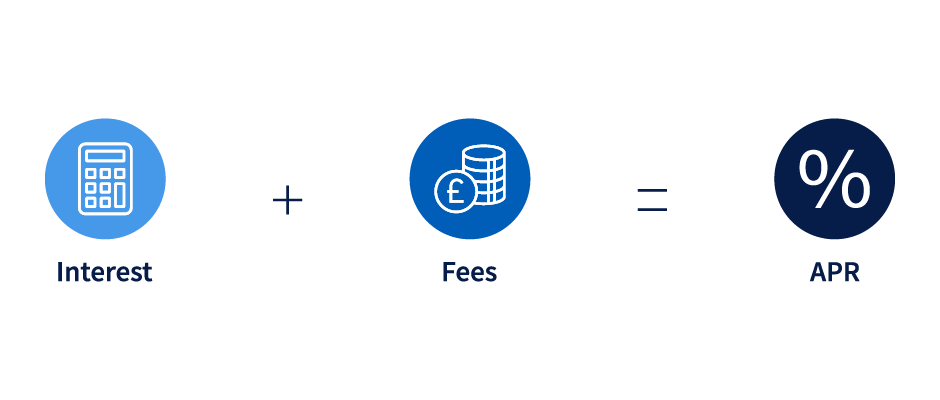Go paper-free
Amend paper-free preferences for your statements and communications.
APR stands for Annual Percentage Rate, but what exactly is that?
The APR gives you a rough idea about how much your borrowing could cost each year, shown as a percentage. It’s also a handy way to compare credit products quickly.

Interest
APR calculations are usually based on your card purchase interest rate.
+
Fees
Account or application fees are included in the APR calculation.
=
APR
The estimated cost of borrowing is shown as a percentage – the Annual Percentage Rate.
|
Example |
Credit limit |
Standard purchase interest rate (variable) |
Account fee |
Representative APR |
|---|---|---|---|---|
|
Example Credit Card A |
Credit limit £1,200 |
Standard purchase interest rate (variable) 18.9% |
Account fee £0 |
Representative APR 18.9% |
|
Example Credit Card B |
Credit limit £1,200 |
Standard purchase interest rate (variable) 18.9% |
Account fee £150 each year |
Representative APR 55.0% |
Yes. Representative APR gives you an estimate of the cost of borrowing over the course of a year, including any standard fees, such as account or application fees.
AER or Annual Effective Rate (sometimes called Annual Equivalent Rate) is a ‘compounded interest rate’, meaning it includes any interest charged on top of interest billed to your account over the course of a year.
At least 51% of applicants will be offered the advertised rate, but that’s based on an assessment of your personal circumstances. If you're not eligible for the advertised rate, you could still be eligible for a different one.
Many credit card issuers provide an eligibility check tool, helping you to narrow down your search to credit cards you are eligible to apply for. The Halifax version is called Simple Check.
The APR is useful for making quick comparisons, but you should review all details before making any decisions. The APR is usually based on the card purchase rate only, so if you plan to make transfers or other types of transaction, you’ll need to compare more than just APRs.
Also consider any fees which might apply as you use your credit card, in addition to any account or application fees, which are included in the APR calculation. Those could include things like transfer or cash transaction fees, and charges for missing payments. Some lenders will also charge for going over your credit limit.
APRC is similar to APR but for mortgages. It stands for ‘Annual Percentage Rate of Change’ and refers to the full borrowing costs of a mortgage for the year. It includes annual interest rates and standard fees. Learn more about APRC.
APR gives you an estimate of how much your borrowing could cost.